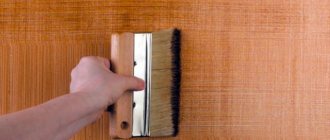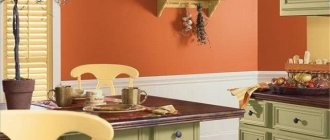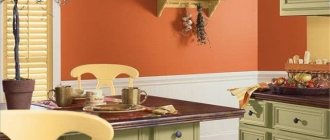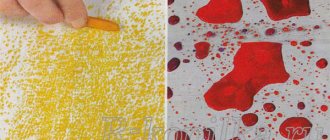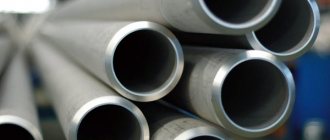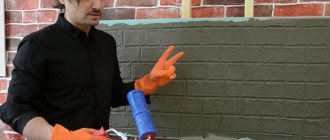Description and characteristics
In fact, the cans contain all the same types of primer for cars that are produced in metal containers, namely:
- acrylic
- epoxy
- acid.
The difference is that it is customary to produce two-component formulations in metal containers. They must be properly prepared before use. A hardener and solvent are added, and only after that the product is ready for use.
Epoxy primer in a can
An aerosol is always a one-component composition that is completely ready for use and does not require additional preparatory manipulations. This is the absolute convenience of the spray.
In terms of its properties and characteristics, the aerosol is no different from soil in jars. The only difference may be the density. It is logical that the aerosol should spray well and provide an even, high-quality coating on metal or plastic. Therefore, it should have appropriate fluidity. If you want to get a dense, viscous primer for your car, buy the product in a can - a spray will not suit you.
But it is suitable for application to the following types of coating:
- black metals;
- chrome steel;
- galvanized steel;
- light alloys;
- plastic.
Primer in a can for plastic
Painting different surfaces - a review of technologies
After failure, the question of how to spray paint correctly no longer seems strange
If we talk about painting technologies, then in the automotive field it is customary to distinguish two basic areas: repair of plastic surfaces (torpedo, bumper, etc.), as well as repair of a metal body (fragmentary).
About working with plastic
Using the example of a car bumper, the process of painting plastic elements of a car will be considered. The first step is to remove this product from the car.
Next, you need to wash it - for this you should use plain warm water. It is not necessary to use detergents (a residue may remain on the surface after using one or another household chemical).
Interesting fact: experts recommend degreasing the surface after any procedure performed. The composition for such work is selected depending on what material the base is made of. Degreasing plastic and metal is often done using different means (and they are not interchangeable).
Using this tool in car painting is a widespread practice.
And now in detail:
- The area that is damaged is thoroughly cleaned - emery cloth will help with this. If you work with plastic, you can limit yourself to P220 grit. When the treatment is completed, the bumper is washed again, then dried and wiped with a special agent - anti-silicone (you can choose something else, similar);
- Any chips, as well as deep scratches, are usually repaired with specialized putty designed for plastic. However, if you don’t have anything like this at hand, you can be content with traditional car putty - this is what many people do today. The composition is prepared in certain proportions: 1 to 50. One part here is the hardener, 50 is the putty. All work is carried out with the utmost care, but you must act quickly. It’s just that the putty hardens within 20 minutes - you need to keep it up to this point;
- The surface is cleaned again after the putty has dried - again using sandpaper for this. Of course, it is better to use a grinding wheel here, but not everyone has one on hand. For convenience, it is recommended to fix the paper on a block. The main point of the work: the transition between the putty surface and the original coating must be ideal, the border should not be determined by touch.
Advantages and disadvantages
Aerosol soil, like any other product, has its advantages and disadvantages. If we talk about the advantages of the spray, we can highlight the following factors:
- simplicity and ease of use;
- compactness;
- even smooth coating;
- the possibility of smooth transitions during local processing;
- lack of preliminary preparation of material for work.
Primer BLACK 400 ml aerosol
The disadvantages of the spray include 2 factors: low productivity and the ability to use only a fluid consistency. To paint the entire car, it is unlikely that you will be comfortable working with spray cans - it is troublesome, time-consuming and ineffective. It is much more rational to prepare a large container of a two-component product and use a pneumatic gun. But the aerosol is indispensable for local types of car repairs. If you are painting over a scratch, scuff or chip, the aerosol option is much more convenient. It is more efficient and will help to better process the desired area.
Sometimes liquid fluid mixtures are not suitable for treating a car body - they flow down the metal without giving the effect of a durable protective film. An aerosol auto primer will also not work for you here—you’ll have to buy viscous mixtures in cans.
Primer for cars in a can
Purpose and use of soils
A primer is a mixture with which, during repair work, the surface is treated before applying any finishing material. The soil helps to increase tenacity and frost resistance. In addition, the use of soil, leveling the absorbent surface, protects it from corrosion.
Advantages and disadvantages of the method
If the paintwork is only slightly damaged, many people try to avoid an expensive painting procedure.
In addition, this procedure can be carried out on your own by purchasing the appropriate cans of paint. It is important to carry out the procedure in the appropriate room and in compliance with all technologies.
Before that, you can evaluate all the advantages of this method:
- To carry out such painting, no special skills or preparation are required;
- using a spray can you can carry out high-quality repairs;
- any surfaces are covered, hard-to-reach places and bends are much easier to paint; no additional components in the form of a roller, spray gun, etc. are required during the work;
- if you have no experience in painting, you will be able to apply an even layer of paint;
- to apply an even layer you do not need to work with a roller or brushes;
- Spray painting will cost less than other means; this service is available to many motorists.
However, it is necessary to realize that all painting methods have their own nuances and disadvantages.
Spray painting is no exception to this issue, so be prepared for the following disadvantages:
- there are no detailed instructions on the rams for painting;
- Sometimes you come across cylinders of poor quality, so before applying to a car, test on another surface;
- Sometimes the declared shade and the real one may differ, so you should immediately purchase the required amount.
Select the color scheme in accordance with the labeling, but if you are still not sure of your choice, then you should consult with the experts in their field.
He will be able to carry out tinting using special equipment.
If the depth of the chip or scratch is insignificant, then it is not necessary to resort to painting; you can polish it.
If primer or metal is visible in the damaged area, then the work will be more serious and eliminating the defect will take longer, as will painting the damaged part of the body.
Spray painting a car is a step-by-step procedure that is ideal for doing it yourself, which allows you to save money at the same time.
This method is suitable for working with a small area of damage, but if the problems are serious, then contacting a service station cannot be avoided. All work will be carried out there in a special box.
Composition and technical characteristics
Acrylic primer. For metal processing, a primer with an acrylic composition based on organic solvents is used. This mixture has proven itself in practice as a reliable and high-quality composition, suitable for processing aluminum and duralumin coatings, helping to obtain a high-strength coating and its excellent protection.
When using such a primer, the properties of the metal do not change even when exposed to high temperatures, since acrylic has a temperature-compensating characteristic.
Acrylic primer is suitable for processing products whose surface is coated with:
- plastic;
- steel;
- aluminum;
- putty;
- metal and so on.
It is resistant to temperature, humidity and adverse weather conditions.
Acrylic aerosol primer is used to treat various types of plastic coatings, small areas such as a rear view mirror or a plastic bumper.
A primer used to prevent corrosion. To ensure good protection of metal parts from corrosion, as well as better adhesion of paint to the surface, an anti-corrosion primer is used.
Strengthening soil. This composition is used to eliminate scratches, dents, small defects, as well as any cracks on car bodies. Several layers of this highly adhesion primer are sufficient to fill mechanical damage.
Corrosive or acidic primer. This composition is designed to work only on metal; it corrodes a thin layer of coating and ensures reliable paint adhesion and fights corrosion. However, an acid primer does not remove rust, but does not allow it to spread.
Alkyd primer is universal, suitable for wood, concrete, and metal.
Indoor painting work
Painting the inside of a house in cold weather is much easier than doing exterior work. But the specifics of painting must be taken into account.
Balcony
Painting a balcony or loggia in an apartment in winter may be required when selling to improve the surface of walls, ceilings, and floors. The most difficult thing is to paint a cold balcony - it is better to wait until the temperature is above zero and only then carry out painting work. If absolutely necessary, you can purchase paint that can withstand low temperatures, wait for a sunny day, make sure the walls of the loggia are warmed up sufficiently, and paint.
Painting is carried out only in the morning - the coating will dry faster due to heating by the sun's rays. If you have an outlet, you can place a heater on the insulated balcony, this will allow you to carry out the work efficiently. Acrylic water-based compositions are well suited for balconies - with their use you can avoid poisoning, they are environmentally friendly and odorless. Such paints increase the thermal insulation characteristics of walls, allow them to “breathe,” and fade and deteriorate very slowly. If there are parts made of plastic or metal on the balcony, it is better to coat them with varnish. The lining is coated with acrylic varnish.
Batteries
Painting a battery in winter has a number of features. To paint the radiator, you need to prepare a brush with metal bristles, a simple brush and a radiator brush with a long handle. You will also need sandpaper, a dust brush, and a knife. Be sure to purchase a metal primer, paint, and solvent. The basic composition must be suitable for radiators and contain anti-corrosion additives and be non-toxic. The best means are:
- acrylic;
- alkyd;
- water-dispersed;
- silicone;
- based on heat-resistant varnish;
- zinc.
How many degrees can such enamels withstand? They are designed for a standard temperature of +80 degrees. Some are available in aerosol form - sold in a can, and by spraying you can easily paint even the most difficult to reach places. It is better to remove the batteries for painting by turning off the water supply. If this is not possible, you should wait until the batteries are turned off in the spring. Hot batteries will be painted poorly and the coating will often swell. After cleaning the surface, it is primed and painted in 2 layers. Each layer must dry completely.
Window
Painting wooden windows in frosty weather outside is undesirable, like other wood products. Only the use of heat guns will make it possible to dry the product well, but the labor intensity of the work will increase significantly. The inside is painted in the same way as it is done in warm weather. The old paint must be removed, the surface primed, and then a suitable composition must be applied. Plastic windows can also be painted using special paints if you need to update their color.
Selecting soil in aerosols
Mixtures of soils are produced in jars and cans in the form of an aerosol. Aerosol cans are one-component formulations; immediately after purchase they are ready for use without additional preparation.
Using an aerosol in cans is most convenient for use.
Aerosol is a product whose identifiable qualities are not much different from primers made from an aluminum container. After applying this component, the surface turns out to be very smooth, where the difference between the painted and untreated part is completely invisible.
Criterias of choice
When choosing a primer you need to consider:
- release date and expiration date;
- manufacturer's reputation;
- description and application features;
- compatibility with car body material.
Spray cans with two-component paint and varnish products
Now there are cans of two-component paint. The container with the hardener is inserted into the valve at the bottom of the can and thus the hardener gets inside and the whole mixture is mixed with a ball while shaking. If the hardener gets in, the shelf life of such paint is significantly reduced.
p, blockquote 42,0,0,0,0 —>
Such cans give excellent results when painting, comparable to painting with a spray gun. Cured paint is more wear-resistant than one-component paint.
p, blockquote 43,0,0,0,0 —>
Preparatory procedures, how to paint correctly
If you decide to carry out all the repair work on your own, then you should do everything as soon as possible. Once you discover damage, do not delay the process, as the problem may get worse.
Once the scratch reaches the metal, the oxidation process begins, leading to rust and corrosion. Because of these defects, more serious work will be required.
Before painting, the car is cleaned using conventional detergents. You need to wait until the surface is dry and then degrease it.
For this, special wipes and solvent are used. After saturating one napkin with it, wipe the surface dry with the second. To ensure greater comfort, you need to remove the part that will be worked on.
All other areas of the body that cannot be painted are covered with protective film and masking tape.
To prevent painting defects from appearing, a special chamber is needed; the room must be completely clean of dust and other contaminants. Lights, like devices, should be directed toward the work surface to avoid glare.
Work should not be carried out outdoors, as exposure to sunlight will negatively affect the result. At high temperatures outside, only the first layer is subject to drying out; it will take longer to wait for complete drying.
Therefore, before applying a new layer, wait until the previous one dries.
Before spraying the can, you should shake it well. Try not to go overboard and cover up the rest of the components.
If you are not sure of the result, then you can try your hand at an old part that you have.
Don't forget to follow the existing instructions and stock up on the following tools:
- paint,
- sandpaper of different levels,
- putty and primer,
- antisilicon,
- polyethylene,
- masking tape,
- elements for protection.
When doing all the work yourself, be sure to consider hand protection; use a rubber or silicone spatula so as not to cause unnecessary damage to the surface. The work of the aerosol begins only after the primer has been applied, dried and polished.
Application methods
Acid primer can be applied using several methods and tools:
- Simple brush.
- Spray gun.
- By lowering a metal product into a solution.
- Electrical spraying.
- Using electrodeposition technology.
In everyday life it is customary to use the first 2 tools. Immersion technology is used in factories.
Is it possible to apply paint to acidic soil?
Experts do not recommend applying paint over a layer of one-component acid primer. Otherwise, the components may cause a change in the shade of the paint due to the action of the yellow pigment.
Features of painting work in winter
In industrial conditions, the need for painting at low temperatures arises if the object needs to be delivered on time, or if there is an urgent need to renew the surface of the building. In everyday life, such urgency is rarely observed, but it still happens. There are a number of features of painting in the cold season:
- The most unfavorable temperature for using paints, enamels and primers in winter is from minus 5 degrees to plus 5 degrees. It’s better to work even in cold weather, because it is in the specified range that condensation will form on any surface. In the presence of moisture, the adhesion of the coating greatly deteriorates and the properties of the paints change. The quality of the coating decreases and it will not last long.
- If you decide to paint facades in cold weather, you need to remember that facade paint of any brand takes 2-3 times longer to dry than in warm weather. To get a high-quality coating, you need to use a heat gun for drying or stretch the film over scaffolding.
- You should choose only enamel and primer suitable for the winter season. Using the wrong material will cause it to freeze, and the ice will prevent the product from being applied to the walls. The final result of the work depends on the quality of the paint.
A number of modern paints are perfectly applied at zero temperatures and in frost, some can be used down to –20 degrees. There are good products that are resistant to temperature changes. It is important that the temperature of the paint and varnish material itself be positive during operation. If the material is cold, it is placed in a container in a bucket of warm water.
Features of aerosol use and its consumption
During construction and renovation work, it is imperative to prepare the coating before applying finishing materials. There are some peculiarities of using soil in cans. Using primer in the form of an aerosol helps you do without tools: brushes, rollers. There are primers for treating brick, or concrete, plastic and wood. A can can be enough to cover an area of approximately 2 to 6 m2. Primer consumption depends on the type of coating and the degree of destruction. The instructions for use provide detailed information on how to use the aerosol and how much it will be needed for repairs.
When carrying out repair work, sometimes you have to deal with heavily rusted metal parts. It should be noted that it is not entirely necessary to clean them completely; you can simply remove loose fragments of rusty scabs with sandpaper. After this, the primer in the form of an aerosol is applied directly to the rust.
How to paint a bumper from a spray can yourself
If painting work is carried out only on the bumper, then no one has canceled the preliminary work; we are talking about cleaning the surface, puttying, priming, and sanding.
After cleaning, the surface should be treated with a solvent, thus removing traces of accumulated resins.
1. The old paint coating is removed with a sanding machine, and the corners are also cleaned. If work is carried out with sandpaper, then the grain size of the sandpaper used is gradually reduced.
All dents are smoothed out with putty. After the solution has dried, sanding and removing dust after it are carried out.
The final procedure is to degrease the surface .
2. One layer of putty is sometimes not enough; additional coating is often required.
3. The primer is applied after degreasing the bumper. Often special cans are used, which make all the work much easier.
The primer evenly covers the affected surface, the sandpaper is processed and as a result you should get a matte surface. If irregularities are found, it is worth repeating all the stages of preparatory work again.
Only after this can you begin to paint. The result of spray painting any part of the body depends 80% on the quality of the preparatory work carried out.
The procedure is very simple and is completed by cleaning with an antistatic cloth.
To avoid leaving fingerprints on the cleaned surface, you must wear gloves. Apply paint from bottom to top to avoid drips and lumps of paint.
After creating the first coat, wait until it dries before applying the second coat. Don’t try to use up all the ingredients in the can, because you can overdo it.
Having done all the work from start to finish once, you will already become a specialist, and eliminating small scratches will not be difficult.
A quick solution to the problem at minimal cost is painting using a spray can. You will appreciate the benefits of the method for yourself; it will help provide complete care for your vehicle at the highest level.
When I bought the car, it had a couple of saffron marks on the arches and above the windshield - painted over with anti-corrosive agent, it wasn’t particularly an eyesore, but after my first wash the anti-corrosive agent disappeared. I decided to paint them since they became very noticeable. It’s November, it’s -7…-15 outside, it’s good that there’s an underground garage (the temperature in it is +3). After reading information on the Internet, I realized that they don’t paint at temperatures less than +15... But the desire to paint was very strong and I decided to take a risk!
Bought:
1) A can of original paint using code 448 (rhapsody), a second one was bought just in case.
250 RUR 2) Rust converter "Tsinkar" 120 RUR 3) A can of acrylic varnish 250 RUR 4) A can of Anticorrosive - I left it, I will coat the arches in the summer.
150r 5) Degreaser - 0.33 liters, take more! But it's better in the form of a spray. 6) Sandpaper, p80, p320, p800, p1500. 7) Emery disc Primer in a can. 250 RUR 9) Putty 200 RUR - should have been used, the result would have been simply super! I took a bunch of newspaper from home, masking tape, a heater that raised the temperature in the garage to +6, a hairdryer, and rags.
But it's better in the form of a spray. 6) Sandpaper, p80, p320, p800, p1500. 7) Emery disc Primer in a can. 250 RUR 9) Putty 200 RUR - should have been used, the result would have been simply super! I took a bunch of newspaper from home, masking tape, a heater that raised the temperature in the garage to +6, a hairdryer, and rags.
After reading a variety of sources on the Internet (videos, articles), I realized that everyone has their own technique. Day one (1)
Arriving at the garage, I saw a picture... I could be seen from afar with such a wing)))) All the paint is in waves and the soil is visible. I took acetone and wiped everything off! Oddly enough, acetone did not take the original paint. And I decided to reconsider the painting technology!
Before each action, you need to degrease the surface (I saved money, but my small bottle of degreaser was enough for me). Spray cans with Paint, Primer and varnish - keep warm!
I put it on the heater! Otherwise, the paint does not come out of the can evenly. I applied a little primer to the degreased surface, then dried it with a hairdryer, sanded it with 1500 grit sandpaper (I didn’t want to use putty, I decided to fill the sinks in layers), then degreased it and repeated this two more times. A total of 3 layers of soil.
The last time I degreased it and began to apply the paint in thin layers (so that the paint did not drip), drying the layer with a hairdryer. Drops of paint should go into the area, but either because of the low air temperature or the cold spray cans, everything started to flow on the first day. I also degreased it properly before applying a new coat of paint. 5 layers of paint were applied... a bit much... I also wanted to hide the transition of the paint to the original color.
Advantages of aerosol packaging
The use of epoxy primer in the form of an aerosol has certain advantages and benefits over other forms of applying a protective layer.
It doesn’t take much time to prepare the soil for use: you just need to vigorously shake the can several times and warm it up to about 20-25oC. When working with an aerosol, you need to spray with a very thin stream, slowly treating the surfaces of the most complex shapes and even closed profiles.
If not all of the epoxy primer in the can has come out, then the spray head must be tightly closed, and the mixture can be used again.
Spray painting a car
It is important to be patient when spray painting as each coat of paint will take longer to dry than when painting with a spray gun.
p, blockquote 13,0,0,0,0 —>
The minimum temperature for spray painting is + 10 degrees Celsius. The ideal temperature is approximately +20 degrees.
p, blockquote 14,0,0,0,0 —>
Before painting, you need to determine at what distance you will spray the paint.
p, blockquote 15,0,0,0,0 —>
Typically, the distance from the nozzle to the surface is 20–25 cm.
p, blockquote 16,0,0,0,0 —>
You must maintain the same distance at all times. The nozzle, when painting, must always be perpendicular to the surface.
p, blockquote 17,0,0,0,0 —>
p, blockquote 18,0,0,0,0 —>
When spraying, the droplets should merge and form a single layer. If during spraying the drops on the surface of the part lie separately from each other, then the distance is too large.
